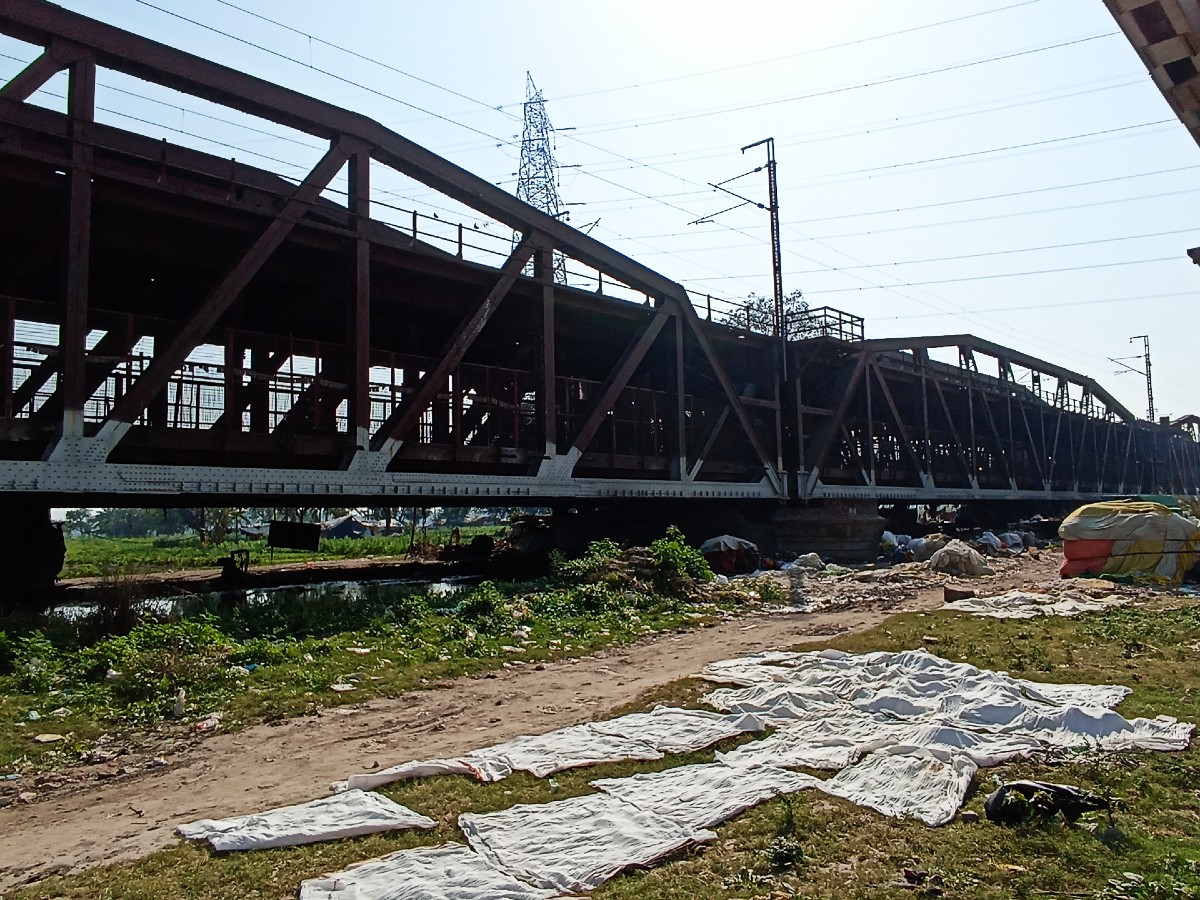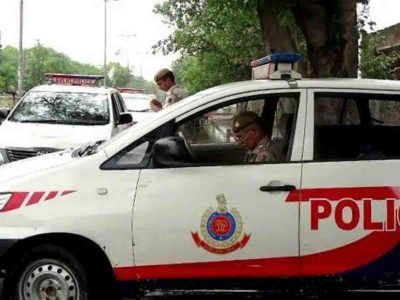Beneath the 156-year-old monumental Old Yamuna Bridge, also called Lohe-Ka-Pul in common parlance, exists a world of struggles of migrants and labourers, who rely on daily wages.
The road-rail bridge, built by British in the 1860s to connect Kolkata (then Calcutta) with Delhi, and officially known as bridge No. 249, is in a poor shape and in need of desperate repairs.
Throughout the day, hundreds of vehicles, trains and bullock-carts cross the Lohe-Ka-Pul, which has developed cracks that sometimes cause e-rickshaws to overturn, and often lead to traffic jams.
Given the poor condition of the two-decker bridge, with the upper tier for train traffic and lower for vehicles, one might feel unsafe even crossing it.
Imagine then, the state of mind of those living underneath it.
“No one cares about the people living under the bridge.We’re living in hell,” says Dharampal, a 40-year-old migrant from Badaun, Uttar Pradesh, who lives under the Lohe-Ka-Pul with his family.
Over the last six years, the bridge has been in the news for a variety of reasons, including its historical significance, the ongoing renovation project and the construction of a new bridge adjacent to it.
As one approaches it, the first thing that strikes the eye is the abundance of makeshift houses and garbage scattered throughout the area just below the bridge. Some houses are even submerged in water released from the sewers. Rickshaws line up to be taken out as the evening progresses, with people resting on charpai and children running around.
As many as 250 people reside in the slums under the bridge. They work as labourers, drive rickshaws, sell vegetables, walk to dhobi-ghat as well as work in the gaushalas.
“It’s our misfortune that we’re forced to stay in this dump just so that we can save money because we don’t earn enough to pay for the rent. But the increasing garbage pile is making it unbearable for us,” adds Dharampal, who has been living in the area for the last 12 years.
“It’s impossible to sit outside in the open during summers, especially in the evenings, because there are so many mosquitoes. Consider our predicament: in the summers when one goes outside to get some fresh air, we are forced to return to our homes.”
The widespread garbage dump also creates a lot of health hazards, especially for the kids.
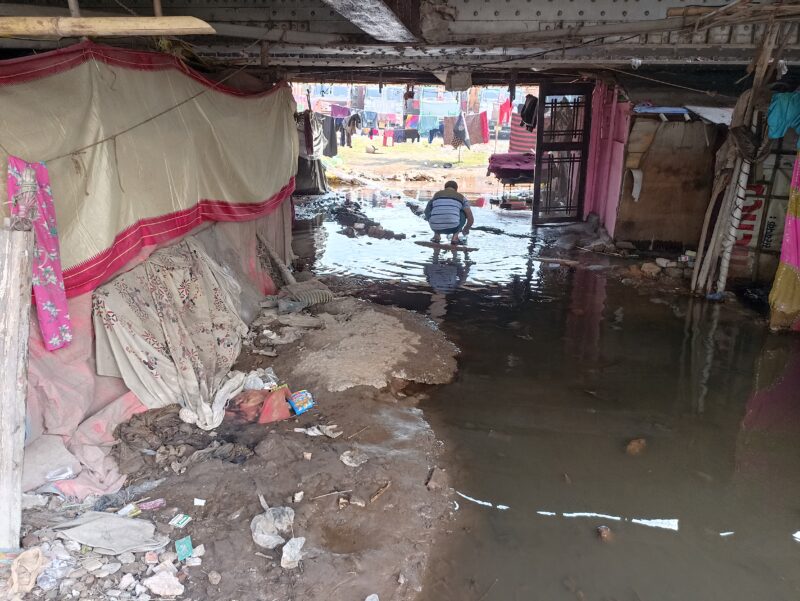
People are always at risk of dengue and the constant honking of vehicles gives a headache everyday, he says further.
Conditions seemed so bad that a 40-year-old resident was seen storing water discharged from sewers in polythene bags to use for basic tasks like cleaning hands.
When asked about it, Laxman Paswan said that the water he is collecting is relatively cleaner and could be used for a variety of purposes other than drinking.
The water tanker that comes every alternate day usually finishes only after serving the first 15 to 20 houses, and Paswan rarely gets any water from that tanker.
“So, we have to make efforts like this.We have become used to it,” he complained.
Ram Naresh Singh, another migrant from Uttar Pradesh, claimed that the garbage has led to numerous problems.
“We live in an open area surrounded by jungles, and snakes and scorpions frequently emerge from the jungle. When there is no electricity and no light in the evenings, it becomes extremely dangerous.I don’t have a bed, so I sleep on the ground or occasionally onthelas (carts), and I never know what kind of animal will bite me.There’s no safety at all,” he explained his ordeal.
“We’ve also lost a dog to a snake bite, and who knows it could be our turn next. We’re living here amid so many risks: health issues from the garbage pile, an unsafe bridge that could collapse any time, animals out to attack us and extreme weather with no protective covers. We are safe because of God’s miracle.”
Mohammad Azad, a rickshaw puller who also stays under the bridge, told Patriot, “I’ve been living here for the last 15 years, and while one would expect things to improve, they’ve actually deteriorated. The number of problems we face on a daily basis is the only thing that has increased in the last 15 years.”
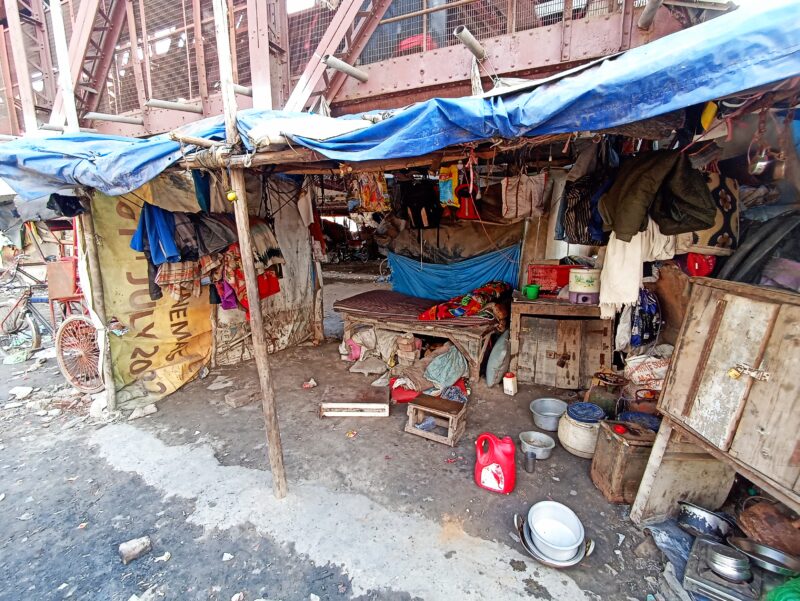
He said that even if they try to manage everything on their own and improve their standard of living and shift elsewhere, they don’t have the means to do so.
“The approximately 250 people living here have been completely neglected by the authorities, so what are we supposed to do. We can’t even get the garbage removed, which we’ve been attempting for quite some time,” he added further.
“If you go outside and look around, you’ll notice that some of the houses are completely submerged. We keep removing the pile of garbage, but it keeps coming back. Now I’ve convinced myself that this isn’t my home, but rather a place where I can rest, wake up, and return to work.”
The authorities have proposed to build a bridge next to the Lohe-Ka-Puland alot of theresidents expected job opportunities to emerge out of it. However, that didn’t happen.
Zakir Mohammad, a 68-year-old vegetable vendor, told Patriot that people, including prominent ones, come for photos and leaders visit during the time of elections, promising to improve the conditions.
“But once their work is done, they forget about us. We’ve also given up hope. Every night, we go to bed, terrified that the bridge will collapse on us. However, in the eight years I’ve lived here, there has been an increase in the number of good Samaritans who come out to help us, especially when Covid-19 hit and we were stuck here with nothing. People came out and helped us with food, blankets and other basic necessities,” he said.
Mohammad told Patriot that they won’t be able to go to night shelters because of fears that their rickshaws will be stolen.
“We’ll have to pay for it. Sir, yahaan pe choribhi bahut hoti hai (stealing is a very common thing in this area),” he said.
Mohammad further complained that not only are their belongings unsafe, even the iron plates that used to hold the bridge together at the centre have been stolen.
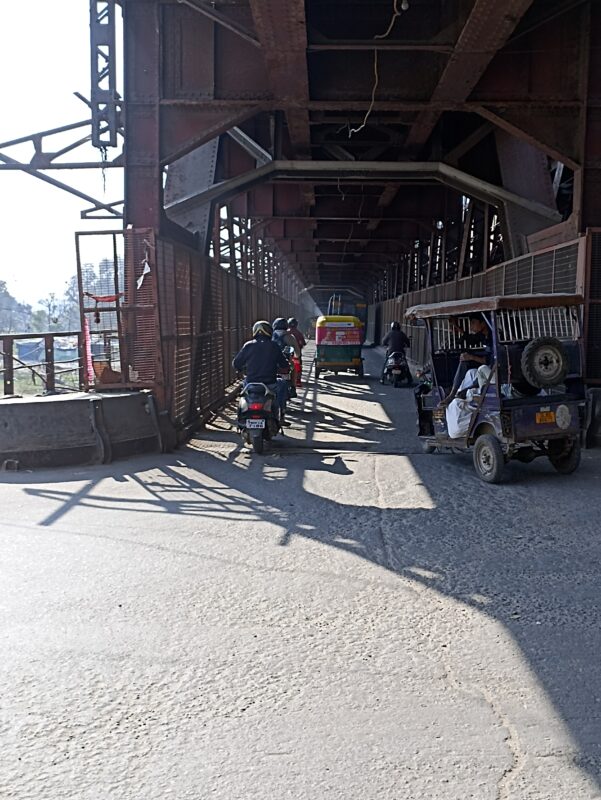
“So, whenever a heavy vehicle passes over the centre, the bridge appears to shake and seems as if it would subside. Especially at night, when you return home after a long and tiring day and are unconscious in sleep, you never know what will happen,” he said.
He concluded by saying that there’s no value for rickshaw pullers here.
“Whether we live or die or get struck by lightning, no one actually cares. I just hope I’ll witness a change in the remaining years of my life.”

